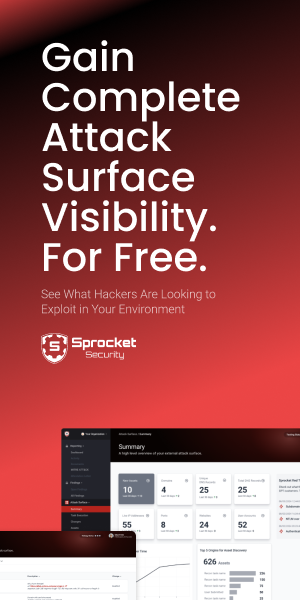Choosing a pentesting vendor is one of the most important security decisions your organization can make. The market is crowded, with vendors offering different methodologies, pricing models, levels of expertise, and reporting styles. The wrong fit could lead to resources and time wasted, or worse: gaps in your security posture.
To help security leaders make informed decisions, we put together a detailed guide, available on Sprocket Security’s Medium page. Here’s a condensed version to help you get started. And when you’re ready for deeper examples and checklists, catch the full guide on Medium.
Define Your Goals Before You Shop
Before you ever compare vendors, clarify why you need a pentest in the first place. This will shape every decision that will follow.
- Compliance-driven testing: if your main goal is to meet requirements like SOC 2, PCI DSS, or HIPAA, you’ll want a vendor with proven experience mapping their testing and reporting to these frameworks.
- Risk-driven testing: if your focus is on improving real-world security, look for vendors who prioritize manual testing and adversary simulation rather than just scanning for compliance boxes.
- Continuous assurance: Once-a-year pentests are going out of style as more teams move toward continuous testing models that adapt to evolving threats and new code deployments.
A clear understanding of your priorities ensures you won’t settle for a vendor who can’t address your specific needs.
Evaluate Methodologies
A strong vendor should be transparent about how they approach:
- Scope and discovery: How they identify the systems and applications to test—are they using an automated scanner? An Attack Surface Management tool?
- Frameworks: Whether they follow widely respected approaches like OWASP Top 10, NIST SP 800-115, or MITRE ATT&CK.
- Manual vs. automated testing: Automated tools are great for speed and consistency, but human-led testing is essential to find logic flaws, chaining exploits, and other advanced attack vectors.
- Reporting style: Look for vendors who provide more than a technical dump—clear, prioritized remediation guidance and collaboration with testers adds tremendous value.
Ask for sample reports and demos, as a good report demonstrates technical depth and business relevance.

Communication and Collaboration Matter
The most impactful pentests feel like a partnership, not a transaction.
Look for vendors who:
- Provide regular updates during the engagement so you’re never left in the dark.
- Offer accessible reporting for both engineers and executives, bridging the gap between technical details and business impact.
- Stay engaged post-test, answering questions and clarifying findings rather than disappearing after delivery.
A vendor’s willingness to collaborate often predicts the overall quality of the engagement.
Don’t Overlook Pricing Models
Pentesting services vary widely in how they’re priced, and the wrong fit can create budget and scheduling headaches.
- Fixed-scope projects: Common for compliance work. Predictable but less flexible if your environment changes mid-engagement.
- Time-boxed testing: You pay for tester hours, which can work for more exploratory assessments but can be harder to predict.
- Continuous pentesting models: Requires a longer commitment, but offers ongoing testing and quicker feedback loops, as well as an established partnership with the vendor.
Compare pricing models alongside methodology. A lower price tag might come at the price of depth, collaboration, and timeliness.
Questions to Ask Potential Vendors
When you narrow down your list to a few top contenders, these questions can reveal strengths and weaknesses:
- What percentage of your testing is automated vs. manual?
- Which frameworks or standards guide your testing methodology?
- How do you communicate progress and findings during the test?
- Can we see a sample report?
- What is your process for retesting after fixes are made?
- How do you handle testing in cloud-native or continuously deployed environments?
These questions aren’t just about checking boxes—they're about assessing fit for your team’s workflows and priorities.
The Value of a True Partner
Ultimately, a pentesting vendor isn’t just a service provider, but an extension of your security team. The best vendors do more than deliver reports; they build relationships, adapt to your environment, and help strengthen your security posture over time.
With the right partner, pentesting shifts from being a compliance burden to an ongoing process that drives measurable risk reduction.
Selecting the right pentesting vendor takes more than a quick price comparison. It requires understanding your priorities, digging into methodologies, and finding a partner you can trust.
For a full breakdown of evaluation criteria, red flags to watch for, and real-world examples, read the complete guide on our Medium page.
If you’re ready to take the next step, start by requesting a quote from Sprocket Security to find out how our experts can help protect your organization with testing tailored to your needs.



